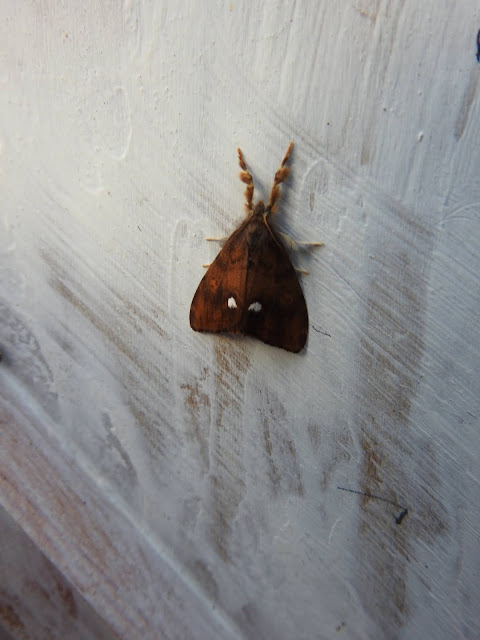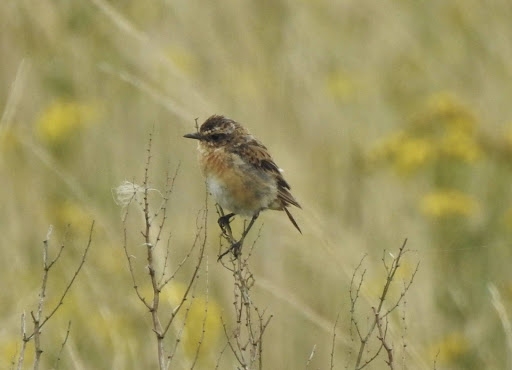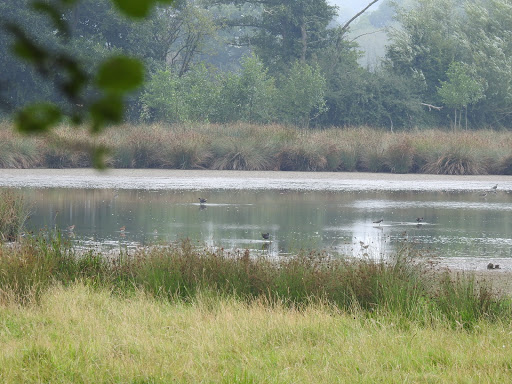A morning of sunny intervals and a chilly northerly breeze can make birding hard work. Indeed the last 24 hours have been quite frustrating.
Bear with me, I'm just going to slip back to yesterday evening's mothing first. The target species group for Moth Night was a spectacular group of very large moths with bright red and crimson underwings and names which matched the description. What they have in common is that they are more attracted to sugar than light. Sugaring is basically daubing trees in sweet stuff, like the 2016 raspberry jam I found in the cupboard, and hoping something comes to eat it.
When I wandered down to the apple tree for the second time in the evening, torch in hand but camera back in the house, I was shocked to see a massive moth sucking the solution up. It was above head height but was definitely a "something" Underwing or a Clifden Nonpareil. By the time I retrieved my camera it had gone.
Back on the patch, the morning had its moments but there was also a hangover of frustration similar to last night's experience. Wildlife watching is often like that.
The first decent bird was a Kingfisher which unexpectedly flew across our path and over a hedge as it departed the Netherstead area. I then picked up a distant falcon powering away towards Studley. Probably a Peregrine.
The same range of warblers were present in the hedgerows, but maybe slightly fewer than recently. We got to the chat field where three chats were found. However they were Whinchats and were not at all keen to pose for photos. There was no sign of the Stonechat family.
 |
| Whinchat socially distancing |
Arguably the highlight of the morning was watching Dave attempting to do himself a mischief by climbing a rather saggy wire fence. By the time we reached the flash pool we had added the first Meadow Pipit of the autumn which headed over unseen, and also a rather smart Painted Lady. This migrant species has not been very common this year.
 |
| Painted Lady |
The flash field contained 42 Teal, five Shoveler, about 50 Mallard, and 26 Lapwings. Yawn. Walking back along Morton Brook we came across the flock of about 80 Goldfinches and a few Linnets.
 |
| Juvenile Goldfinch starting to acquire its adult plumage |
But that was about it for birds. Instead, we had to rely on insects to keep us amused. A Common Blue butterfly was presumably from a second brood.
 |
| Common Blue |
But the most frustrating moment of the morning came at the dragonfly pools where we watched what I'm still fairly sure was a male Emperor head across to the far side, and then disappear. This is an exceptionally late date for this species, so we hung around hoping for another look. Instead, a male Migrant Hawker appeared. Personally I'm sure the first dragonfly was not a hawker, but Dave started to have doubts, so I'll have to let it slip away without conclusion.
Ah, the frustrations of recording wildlife.

















































